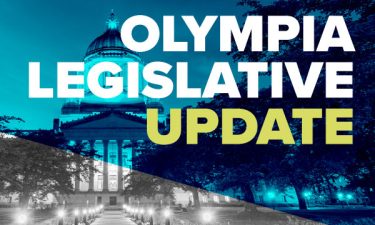When you have fiscal policy spending that is close to 11% of GDP in 2021, it is difficult to not make a case that economic growth should be strong this year, and potentially very strong. Congress and the Administration appear to be attempting to give the economy a massive boost to spending with the hopes that it carries forward into sustainable growth for the future. This is similar to a jet fighter hitting the afterburners to boost speed.
We may have become a bit desensitized to the dollar amounts given the amount of spending legislation that has been passed. To give perspective on the massive amount of fiscal policy spending that has been enacted during the pandemic crisis, consider this comparison versus the fiscal policy spending that occurred in the two years of the financial crisis:
- 2008: 1.1% of GDP, 2020: 9.9% of GDP
- 2009: 6.9% of GDP, 2021: 10.8% of GDP
The two major pieces of legislation (CARES Act last April and the American Recovery Plan this March) total over $4 trillion and both were front-loaded to get money to consumers as fast as possible. This is occurring with the backdrop of vaccination rates accelerating and states beginning to lift more restrictions. On top of that the consumer has built up their savings rate to 13.6% of their disposable personal income (income after taxes). If the pent up demand plays out the way economists are forecasting, this is a formula for robust economic growth in 2021. The ingredients are clearly there for 2021 to be a year of strong economic growth. After what we lived through in 2020, I believe everyone would welcome stronger economic growth.
When everything looks rosy, it is important to consider what could change the rosy outlook. Here are some thoughts to consider.
- Fiscal policy spending can clearly increase demand as money is deposited to consumer accounts. That money is immediately available to spend. E-commerce and delivery services make online shopping an easy way to shop without being exposed to people not wearing masks.
- Economic restrictions continue to limit supply. National manufacturing surveys show clear evidence of supply problems and delivery times being extended. The global supply chain has not been fully restored and many shippers are reporting cargo container shortages. On top of that, ports are backlogged due to reduced work force created by COVID-19 restrictions. Even restaurants and other Leisure & Hospitality businesses are reporting labor shortages as many workers are making more money receiving the extended unemployment benefits compared to their normal wages.
- Increased demand with restricted supply is a recipe for higher prices. Businesses are reporting rising raw material prices due to the supply chain issues. Businesses will most likely try to pass on those increases as they have much less leeway to absorb price increases due to the financial damage caused by the pandemic restrictions.
- The consumer may not spend as much as economists are forecasting due to several reasons. 1) They bought most of what they wanted with the first two fiscal aid payments; 2) their financial condition deteriorated during the crisis so they use the money to pay down debt or build up savings; 3) they try to buy items only find them out of stock or now too expensive.
We need to remember that, so far, all of the fiscal policy spending is temporary and most of it will run out by the end of the 3rd quarter. Unless the economy reopens quickly and businesses and jobs recover, 2021 may prove to be a “sugar high” that is unsustainable. This creates the prospect for a square root recovery (i.e. surge higher, drop back and then level off).
The real key for the economic outlook remains how quickly the economic restrictions are lifted so that businesses can fully reopen, re-hire employees and address the supply issues. In order for that to happen, progress needs to continue in the battle against the virus. It is truly the case that as goes the battle against the virus, so goes economic growth. The virus may be killing people but the economic restrictions are shutting down small businesses. Small businesses are the life blood of the economy especially economies like the Spokane-Spokane County region. We all have a role in this effort whether it is getting vaccinated, following medical protocols, supporting small businesses or providing assistance to those in need. Together we can make this happen.




